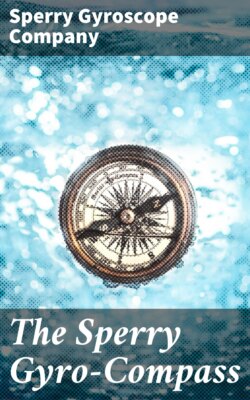Читать книгу The Sperry Gyro-Compass - Sperry Gyroscope Company - Страница 6
На сайте Литреса книга снята с продажи.
ОглавлениеA War-ship, “when knighthood was in flower”.
How a Compass is Used
Table of Contents
HE purpose of a compass is to indicate direction. The relative position of the North Pole to any point on the earth’s surface is called North. We figure all direction from this conception. This geographical North Pole is called the True North. About 800 miles from this True North Pole is a spot which has a strange magnetic attraction. The needle of the magnetic compass, if undisturbed by local influences, points to this spot, and not to the True North Pole. This spot is called the Magnetic North Pole. This mysterious attractive spot is not stationary. It moves about from year to year within a wide circle.
Inasmuch as the navigator must refer to True North, he must determine the angle or variation between True North and Magnetic North as indicated by his magnetic compass. This determination is made comparatively easy by using charts which express in degrees the difference between Magnetic North and True North for any point on the earth’s surface.
Such a chart is shown in Figure 3. Also on each chart used by a navigator for a particular locality there is marked a compass rose in which is recorded the variation for that exact spot as of a certain date, and in addition the rate at which the variation changes annually, Figure 4.
Navigation along a coast line where sights can be taken on buoys or lighthouses is simple, and is termed “piloting.” This, of course, can be done without the aid of a compass.
Upon getting to open sea the mariner checks his position in a similar manner, by observing the position of his ship in relation to the position of the sun, moon or stars. Between observations the position of a ship is determined by “dead reckoning.” The distance it has traveled from the last known position is measured by the ship’s log and the direction is indicated by the compass. Very often for days at a time, owing to weather conditions, it is impossible to get an observation or sight on a celestial body. During this run the navigator is dependent entirely upon the compass. The slightest error in the compass, due to variation or deviation, in such circumstances will cause the ship to be miles out of its course, and the actual position will be far from the calculated position.
